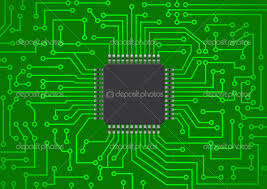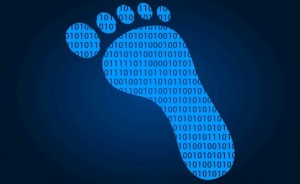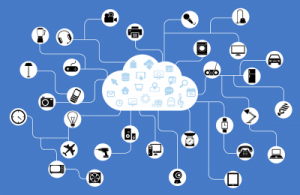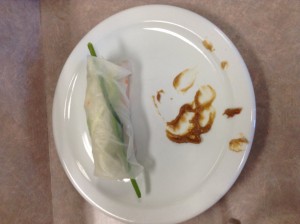Author: yulieo2016
Mutation Cancer Story
Hello, my name is Ellen, I’m a mutated cancer gene. I’ve been living in my host’s choroid (which is the pigmented vascular layer of the eyeball between the retina and the sclera) for a year now. Eye cancer is the most common type of cancer which occurs at the back of the eye so I am not surprised this happened to me. It arises from the pigmented cells of the choroid of the eye so it is not a tumor that started somewhere else and spread to the eye. It all started when I was a normal gene in one of her cells. One day I slowly began to transform into a weird looking gene. I didn’t know what was happening so I ignored it. Later more of the genes, including my friends, started to change. I asked the muscle cells if they could ask the skin cells if they know anything about this condition, and later I got the message that they don’t know much except for the fact that the outside of my host’s body has a bump right on top of where I am standing which was slowly growing into a huge bump.
0h, I forgot to introduce my host’s name. Her name is Kelly. She is 18 years old and really loves playing soccer and she wants to be a professional soccer player in the future. If you go to the same school with her, you may be able to see her running on the grass field after school on days when it is not raining. She is very healthy and athletic so she might not know that I, a cancer gene, is living in her eye. The cause of her cancer is kind of hereditary but also because she is outside a lot, she might have gotten too must ultraviolet rays.
Including myself, all mutated genes are getting pulled away from each other right now to spread apart and I cannot control myself. She can probably see tiny dots that look like bugs and dust in her eye because of this mutation. Right now, she has trouble with sight because of us, but also fatigue, and that isn’t the only symptom she has. She sometimes sees dazzling light that blocks her vision so she has difficulty scoring points during soccer games. She recognizes the seriousness of the situation and finally decides to see a doctor. The doctor told her that I must get removed through surgery, which is a treatment that involves either a laser, radiation, or an implant of radioactive material that may preserve vision and save her eye. I love my host and I don’t want to leave her, but I am dangerous and can kill her so I am willing to do this for her. The surgery would not be successful if the tumor turns out to be too large, but I know it is not too big because my friends and I are not too far away from each other. I hope the surgery will be successful so she can see clearly again and become the best soccer player in the world.
part 2)
1) What questions did you need to research in order to create your cancer story?
What is eye cancer?
How does eye cancer form?
What are the symptoms of eye cancer?
What are the types of treatment?
How many people die of eye cancer?
Is eye cancer deadly?
What causes eye cancer?
How does the inside of the eye look like?
Which section of the eye starts the tumour formation?
2) What new or familiar digital tools did you try to use as you worked through this project?
The familiar tools I used were Wikipedia and Korean websites like Naver.com.
A new digital tool I used were YouTube videos because I wanted to see diagrams and images instead of just words.
3) What was the process you used to investigate the topic?
I started with research to learn about Eye cancer. I took notes on important information and with the notes, I made an outline of the story and created the characters. I wrote my rough copy, asked my cousin to read it, and finally, I wrote my good copy.
4) How did you verify and cite the information you found?
I checked that the information was correct by going on multiple websites to check that the information was all the same.
5) How did the process of completing this challenge go? What could you have done better?
It was a fun challenge. I never had to write anything like this before, but I think it was a good way because I learned a lot about this type of cancer and mutation. I would have liked to spend more time on research because I want to know exactly how the gene gets mutated and also spend more time on making the story more interesting.
solution fluency
Electronic chips
http://ko.depositphotos.com/37147115/stock-illustration-chip-electronic.html
Sometimes students think about why we have to study in spite of knowing the answer. We want to be the winners of society and in order to achieve that dream, we must study hard to know as much as possible. But studying isn’t the only way to become intelligent and knowledgeable—there are electronic chips. It might be a strange idea because it was already invented a long time ago but it isn’t used by a lot of people today. The electronic chip uses electricity and saves a lot of information like a USB. If you want to get information about something you can find on the internet, books, or others resources, save them on an electronic chip. After that, you will not forget that information until the electronic chip is removed from the brain. Also it can check the identities of humans so it can replace identity cards and fingerprint checks. Additionally, GPS is included with the chip so we can easily locate one another.
static electricity
What do you think are the 3 most important things we have learned about static electricity?
- Electrons, neutrons, protons, and atom’ exact meanings
- Transfer of electrons. A material that doesn’t have less electron than other material , because a material own electrons moved into other one so one is positive and other one is negative.
- If two materials are different their amount of electrons from each other, they attract each other because one charge is positive and other one charge is negative.
What lab did you find the most helpful in understanding static? Explain how it was helpful.
- the most helpful lab that used a balloon, a wool, a paper towel, and etc. it helped me to understand transfer of electrons.
Math 9 Midterm Review
I think the surface area and factoring are the most difficult concept for me.
question 1. solve the surface area of a 6cm cube
6(6×6) = 6(36) = 216. so the answer is 216 cm.
question 2. simplify (3x+ 4)(2x+3) and (x+6)(2x-4), and solve x²-7x+6.
(3x+ 4)(2x+3) = (3×2)x²+(3×3+2×4)x+3×4 = 6x²+(9+8)x+12 = 6x²+17x+12
(x+6)(2x-4) = (2×1)x²+(1×-4+6×2)x+6×-4 = 2x²+(12-4)x-24 = 2x²+8x-24
x²-7x+6 = (x-6)(x-1)
factoring
link: https://www.youtube.com/watch?v=eF6zYNzlZKQ
surface area (rectangular prism)
link: https://youtu.be/lm46kqCDWaI
Digital Footprint
link: https://www.harpermacleod.co.uk/hm-insights/2016/march/death-and-your-digital-footprint-creating-a-personal-assets-log/
1.How might your digital footprint affect your future opportunities? Give at least two examples?
link: http://www.globalresearch.ca/the-whole-point-of-the-internet-of-things-iot-is-so-big-brother-can-spy-on-you/5507107
If we use internet, we can offer to more information, and we can use information for study.
2. Describe at least three strategies that you can use to keep your digital footprint appropriate and safe?
- Don’t access the site that adjure your personal information. Because your personal information can easily be abused by others.
- Don’t neglect care of personal information. Because if your data are spill, you may get damage of money.
- Change sites password often. Because it can be prevent of hacking.
3. What information did you learn that you would pass on to other students? How would you go about telling them?
I did learn how to study well.
salad roll
Mise en place
1. I enjoyed the lab because it was a recipe that was different from the other recipes that we’ve tried so far. It was a very authentic dish and also very delicious.
2. I think it will be tastier if we add meat to the salad, like ham or bacon. (protein)
3. Deep fried foods are unhealthy because they are very high in trans fat which can increase your risk of heart disease and obesity. Deep frying could also kill some of the nutrients contained in the food.




